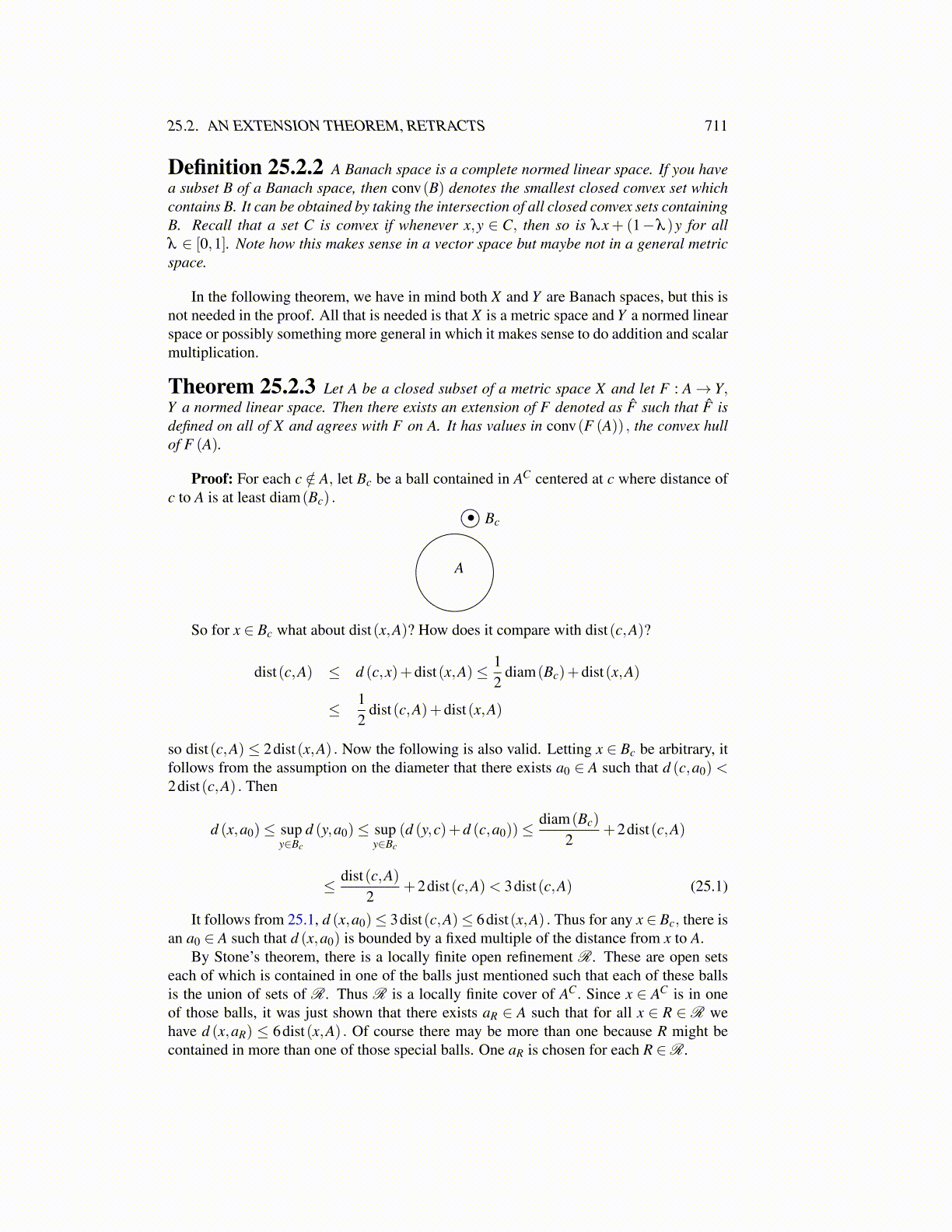
25.2. AN EXTENSION THEOREM, RETRACTS 711
Definition 25.2.2 A Banach space is a complete normed linear space. If you havea subset B of a Banach space, then conv(B) denotes the smallest closed convex set whichcontains B. It can be obtained by taking the intersection of all closed convex sets containingB. Recall that a set C is convex if whenever x,y ∈ C, then so is λx + (1−λ )y for allλ ∈ [0,1]. Note how this makes sense in a vector space but maybe not in a general metricspace.
In the following theorem, we have in mind both X and Y are Banach spaces, but this isnot needed in the proof. All that is needed is that X is a metric space and Y a normed linearspace or possibly something more general in which it makes sense to do addition and scalarmultiplication.
Theorem 25.2.3 Let A be a closed subset of a metric space X and let F : A→ Y,Y a normed linear space. Then there exists an extension of F denoted as F̂ such that F̂ isdefined on all of X and agrees with F on A. It has values in conv(F (A)) , the convex hullof F (A).
Proof: For each c /∈ A, let Bc be a ball contained in AC centered at c where distance ofc to A is at least diam(Bc) .
• Bc
A
So for x ∈ Bc what about dist(x,A)? How does it compare with dist(c,A)?
dist(c,A) ≤ d (c,x)+dist(x,A)≤ 12
diam(Bc)+dist(x,A)
≤ 12
dist(c,A)+dist(x,A)
so dist(c,A)≤ 2dist(x,A) . Now the following is also valid. Letting x ∈ Bc be arbitrary, itfollows from the assumption on the diameter that there exists a0 ∈ A such that d (c,a0) <2dist(c,A) . Then
d (x,a0)≤ supy∈Bc
d (y,a0)≤ supy∈Bc
(d (y,c)+d (c,a0))≤diam(Bc)
2+2dist(c,A)
≤ dist(c,A)2
+2dist(c,A)< 3dist(c,A) (25.1)
It follows from 25.1, d (x,a0)≤ 3dist(c,A)≤ 6dist(x,A) . Thus for any x ∈ Bc, there isan a0 ∈ A such that d (x,a0) is bounded by a fixed multiple of the distance from x to A.
By Stone’s theorem, there is a locally finite open refinement R. These are open setseach of which is contained in one of the balls just mentioned such that each of these ballsis the union of sets of R. Thus R is a locally finite cover of AC. Since x ∈ AC is in oneof those balls, it was just shown that there exists aR ∈ A such that for all x ∈ R ∈ R wehave d (x,aR) ≤ 6dist(x,A) . Of course there may be more than one because R might becontained in more than one of those special balls. One aR is chosen for each R ∈R.